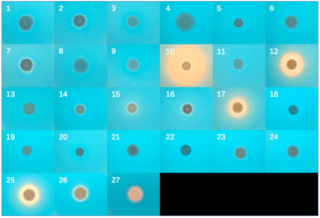Survey of fungal genomes reveals functional adaptation of a set of borrowed bacterial genes

Evidence of ancient transfer of a gene cluster from bacteria to yeast shows adaptive capacity that could inform new bioproduct synthesis strategies
The Science
The basic ways that genes get transcribed and translated into functional proteins share broad similarities in bacteria and eukaryotes, but with fundamental differences in how those processes are carried out. Scientists at the Great Lakes Bioenergy Research Center at the University of Wisconsin–Madison and collaborators at several other institutions combined phylogenetic, mRNA expression, and biochemical analyses to provide compelling new evidence that eukaryotes can acquire new traits via the horizontal transfer of operons from free-living bacteria. In addition, the transferred genes show modifications compatible with standard eukaryotic transcription processes. This remarkable example shows how eukaryotes can acquire a functional suite of bacterial genes and adapt its transcription to domesticate and express it as a set of linked eukaryotic genes.
The Impact
This evidence of horizontal operon transfer dramatically expands the boundaries of gene flow between unrelated organisms. The transfer of a multi-gene bacterial operon to a eukaryotic host – yeast – and its subsequent maintenance, expression, and adaptation in that host underscore the flexibility of eukaryotic transcriptional and translational systems to accommodate novel and unexpected sources of genetic information. Such adaptability may reveal new biochemical functions that could be harnessed for producing valuable bioproducts.
Summary
Operons are a hallmark of bacterial genomes, where they allow concerted expression of a cluster of functionally related genes as single polycistronic transcripts. They are rare in eukaryotes, where each gene usually drives expression of its own independent messenger RNAs. This study reports the horizontal operon transfer of a siderophore biosynthesis pathway from relatives of Escherichia coli into a group of budding yeast taxa. After transfer, several genetic changes occurred during subsequent evolution, including the gain of new transcription start sites that were sometimes within protein-coding sequences, acquisition of polyadenylation sites, structural rearrangements, and integration of eukaryotic genes into the cluster. The co-linearly arranged secondary metabolism genes are functionally expressed in the yeast and enable it to sequester and uptake iron.
The researchers conclude that the genes were likely acquired as a unit, modified for eukaryotic gene expression, and maintained by selection to adapt to the highly competitive, iron-limited environment. These findings expand the possibilities of discovering or synthetically transferring desirable biochemical functions in organisms that may not have been expected to have such functions. Identifying new properties in the vast number of fungal genomes available may result in new strategies for the production of valuable bioproducts and chemicals.
Program Manager
N. Kent Peters
Program Manager, Office of Biological and Environmental Research
kent.peters@science.doe.gov, 301-903-5549
Corresponding Author
Chris Todd Hittinger
University of Wisconsin–Madison
cthittinger@wisc.edu
Funding
This work was supported by the National Science Foundation (DEB-1442113 and DEB-1442148), the DOE Great Lakes Bioenergy Research Center (DOE BER Office of Science DE-SC0018409 and DE-FC02-07ER64494), the USDA National Institute of Food and Agriculture (Hatch Project 1003258), NIH (NIAID AI105619), a Guggenheim Fellowship, a Pew Scholarship in the Biomedical Sciences supported by the Pew Charitable Trusts, a Vilas Early Career Investigator Award supported by the Vilas Trust Estate, and by a NHGRI training grant to the Genomic Sciences Training Program (5T32HG002760).
Publication
Kominek, J. et al. “Eukaryotic Acquisition of a Bacterial Operon.” Cell 176, 1356-1366 (2019) [DOI: 10.1016/j.cell.2019.01.034].
Related Link
https://www.cell.com/cell/fulltext/S0092-8674(19)30097-2